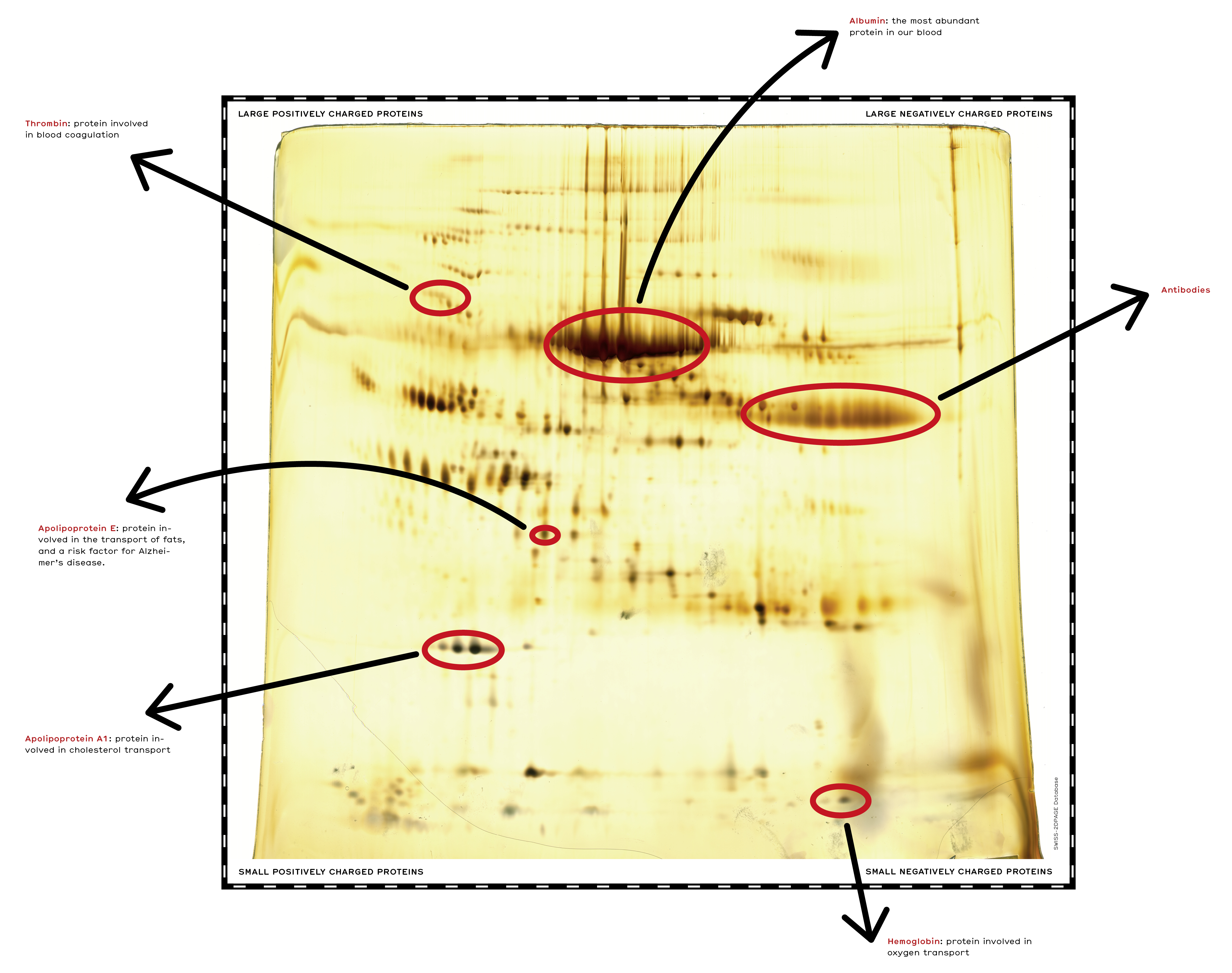List of chromosomes » Chromosome 19
Our blood at 7.59 a.m.
cells on demand
On the one hand, we have specialised cells: liver cells and intestinal cells for instance. On the other hand, each type of cell does different things at different times of the day. As an example, after a good meal, our intestinal cells produce proteins which will help us digest. When the sun sets, certain brain cells will start producing proteins which are involved in sleep. And if you have had the misfortune of catching the flu, immune cells will be activated to help you get rid of the infection.
before, during and after
How can scientists know what cells are doing in a given tissue at a given time? The answer is by studying the proteins which are present in the tissue at that time. This is the field of ‘proteomics’. Proteomics helps to identify not only proteins but also to compare their production following the intake of medication for example, whilst on a diet or even during the day/night cycle.

a geographical map of proteins
Researchers thus have the tools they need to observe proteins which are produced in our blood at 7.59 in the morning for instance, but also one week after a given treatment. What are these tools?

In the laboratory, scientists know how to separate proteins according to their size and their electric charge on a gel. The technique is called 2D gel electrophoresis. Once the proteins have been separated, scientists can study a collection of dots spread across the gel; each dot is a specific protein. But which protein? The gel is then scanned and analysed with the help of bioinformatics programs. Each dot – or protein – is then identified by comparing the collection with other collections that are already known.
our blood at 7.59 a.m…
Over 600 dots were identified on this map thanks to computer programs. The images and their interpretation are then stored in public databanks.

External links
Corresponding protein in UniProtKB/Swiss-Prot
Internal links
What is a protein?
Protein Spotlight – comics: What’s a protein?
Chromosome 22: My genome, your genome, their genome… and then what?

